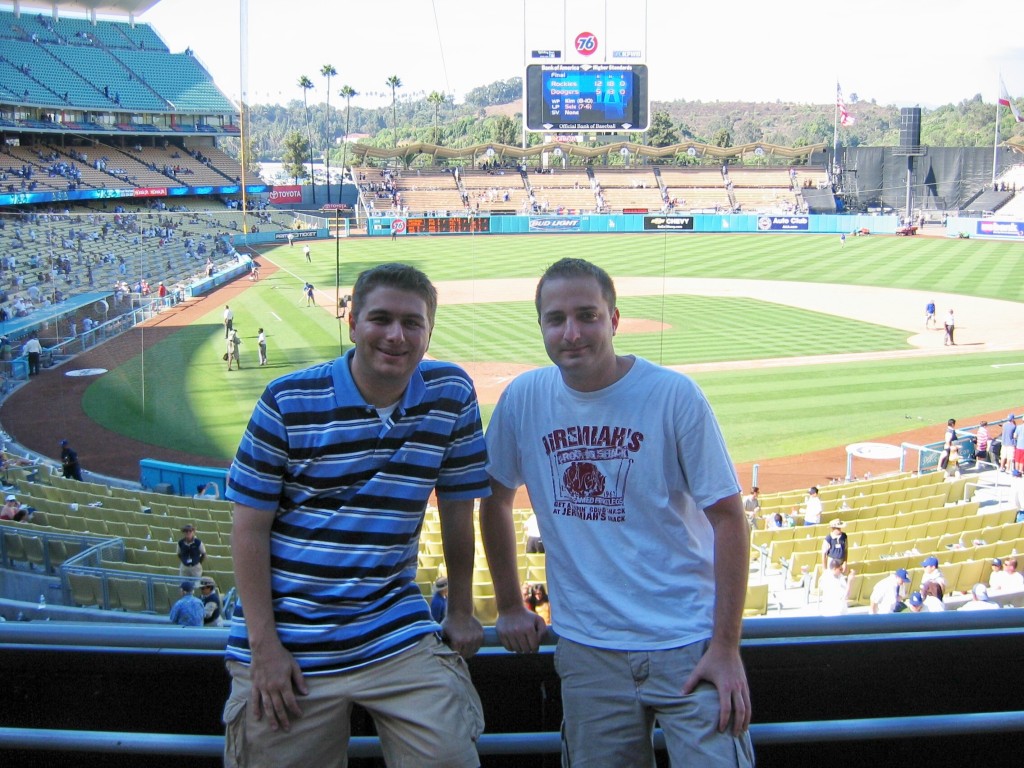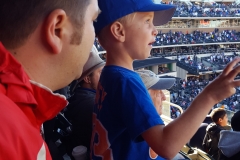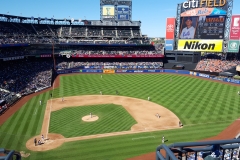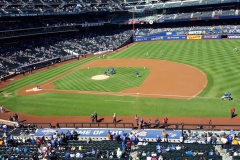
September 3, 2006: Los Angeles, California
Since opening its gates on April 10, 1962, Dodger Stadium has welcomed more National League baseball fans than any other National League ballpark. In 1978, Dodger Stadium was the first ballpark to draw over 3 million fans. Since then the Dodgers have set numerous attendance records. Mike and I were two of the 3.8 million record-setting patrons to enjoy a ballgame at Dodger Stadium during the 2006 season. The popularity of the Dodgers has never been greater; under new ownership the Dodgers have created an L.A. image that appeals to their fans. Prior to the 2006 season, the Dodgers replaced every seat in the stadium with seats reminiscent of the 1962 color scheme. The Dodgers organization also paints Dodger Stadium every year to reinforce its aesthetics.Before becoming the Los Angeles Dodgers, they were the Brooklyn Dodgers, my family’s team of choice. The proverbial Brooklyn “Bums” were second-class citizens in New York, losing the World Series six times between 1941 and 1956, winning only in 1955. These defeats did not dissuade Dodger fans across the borough. My father told me he would skip class to attend Dodger games. Visiting Ebbets Field and being a Dodger fan was part of the fabric of Brooklyn. It was a badge of honor, showing that you were someone who could fall down and pick yourself up again and again. Brooklyn Dodger fans’ admiration could not overcome the desire of the O’Malley Family, who owned the team, to build a new ballpark. After being turned down for a new ballpark to replace Ebbets Field, the Dodgers moved to Los Angeles in 1957.
Broken hearts on the East Coast equaled elated ones on the West Coast as Major League Baseball came to California for the first time. The O’Malley Family was given 300 acres of land in Chavez Ravine, at the time a Los Angeles ghetto. Dodger Stadium was built to blend into its surroundings, which, I can say after my visit, was accomplished very well. Entering Dodger Stadium is unlike any other in Major League Baseball. Fans enter the stadium at the level their tickets show. There are no north-south concourses, only a series of elevators and escalators. Having been built in 1962, most would think this would have been copied, but surprisingly it has not. The design controls traffic and deters seat-hopping for those not interested in making the extra effort.
September 2006: The Dodgers were in the midst of a run that brought them out of the cellar in the National League West and into the catbird seat. It was the final day of a long home stand so Dodger manager Grady Little decided to keep some veterans out of the lineup and display some of the Dodgers’ young prospects. The 2006 Dodgers were a disjointed team; they had veterans Nomar Garciaparra and Jeff Kent, but also sprinkled in young players Matt Kemp, James Loney, Russell Martin, Andre Either, and Chad Billingsley into the lineup. They would end the regular season as National League Wild Card winners before being eliminated by the New York Mets in the National League Division Series.
After making our way up the Pacific Coast Highway and visiting L.A. original Philippe’s (home of the best French Dip sandwich on the West Coast), Mike and I settled in at Dodger Stadium to watch veteran Aaron Sele face the enigmatic Byung-Hyun Kim of the Colorado Rockies. The 44,895 in attendance were treated to a slugfest as the Rockies defeated the Dodgers 12-5 on the shoulders of Matt Holliday (2-for-4 and2 RBI, including a 481-foot home run), Garrett Atkins (3-for-4 with 2 runs and 2 RBI), and rookie shortstop Troy Tulowitzki (4-for-4 with 2 runs scored).
Located in the image capital of the United States, the ethos of Los Angeles has been transferred to the Dodgers organization. Outside the left field fence sits a sign atop a hill: “Think Blue.” This sign is reminiscent of the “Hollywood” sign, which symbolized the glitz and glamour associated with Los Angeles and the movie industry. As I look back at my time at Dodger Stadium, I cannot help but think how things would be different if they were still playing in Brooklyn. Go Bums!





